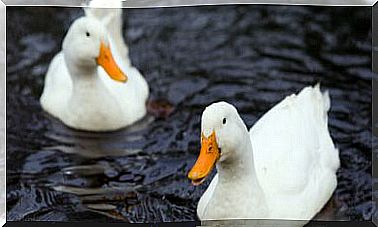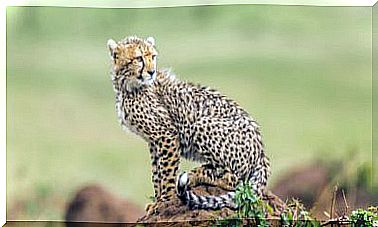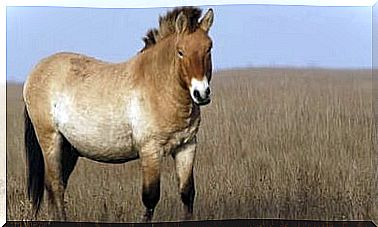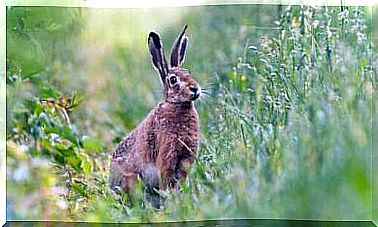5 Nectarivorous Birds You May Not Know
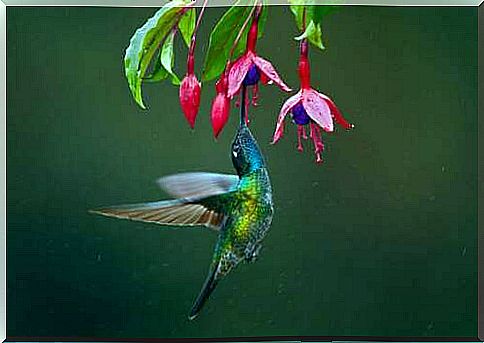
In the tropical and temperate regions of the planet, there are many nectar-sucking or nectarivorous birds. Some of the most representative birds of this group are the birds belonging to the Nectariniidae family in Africa and the honey-eating birds ( Meliphagidae family ) in Australia.
In the tropical region of the American continent, nectarivores are birds of the Trochilidae family , also known as hummingbirds. Within this family there are about 300 different species.
But it seems that there are also other species that do not belong to this family that feed on nectar. Read on to learn more about nectarivorous birds.
What is nectar?
First of all, to understand the way of life of these curious birds, you need to know what nectar is and why it is so nutritious for them. However, it is important to point out that no bird’s survival can depend solely on nectar, as it does not contain enough essential amino acids.
Nectar is a liquid composed mainly of sugar, in particular from sucrose. Sometimes it also contains polysaccharides, amino acids and lipids. Nectar-producing plants use it exclusively as a strategy to attract pollinators.
Bird-pollinated plants often have red flowers (the best colors birds see) and are odorless. When the bird approaches for nectar, it catches pollen next to it that it can deposit on the next flower it visits. In this way it promotes the pollination of plants.
Curiosities about nectarivorous birds
Nature is provident, so the birds that suck nectar have all the morphological tools to consume this substance and digest it. They also need to take in small amounts of insects to complement their diet. In fact, a diet based exclusively on nectar would generate very serious nutritional deficiencies in birds.
- Nectarivorous birds have long, narrow beaks, some slightly curved downwards.
- The tongue is also usually very long, with protrusions of a different nature that increase the surface and facilitate the extraction of the nectar.
- The digestive system of these birds is very small. In addition, the gizzards (a highly developed muscular part of the stomach in granivorous birds) are very muscular.
- Their digestive system does not have the intestinal cecum typical of other birds.
- The nectar is digested quickly and produces a lot of urine. To prevent the loss of electrolytes overnight, some nectarivorous birds interrupt their kidney function.
- To get the nutrients that nectar does not provide, these birds spend some of their time searching for soft-bodied arthropods.
- Younger specimens start with a diet based on arthropods and then move on to consume the nectar as they grow.
5 species of nectarivorous birds
Next, we will show you some of the most beautiful nectar-sucking birds and also reveal some curiosities about their origin and lifestyle.
Malachite nectarine
In the south-east of Africa lives one of the most beautiful nectarivorous birds, the malachite nectarinia ( Nectarinia famous ). It belongs to the Nectariniidae group of birds which, unlike hummingbirds, perch on the plant to eat.
During the breeding season, the male of Nectarinia malachite acquires a very bright blue-green color under the sun’s rays. Additionally, two of its tail feathers are up to 10 centimeters long. It feeds mainly on nectar, but it also hunts for insects.
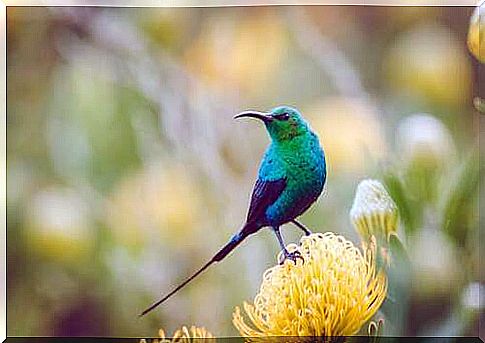
Cinnyris venustus
It is another bird of the Nectariniidae family . The bright yellow chest and the rest of the blue body, which changes color in the sunlight, makes it one of the most beautiful birds in the world. The females, unlike the males, have a more discreet color, but always with a yellow breast.
They are birds skilled in the art of nesting, which create magnificent nests in the branches of trees. Like other nectar-sucking birds, they eat more insects during the breeding season.
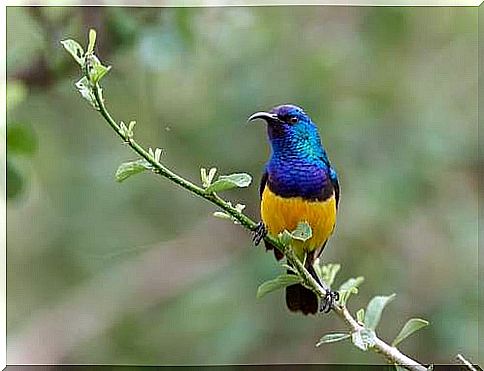
Phylidonyris novaehollandiae
The Phylidonyris novaehollandiae is a bird endemic to South Australia. Males and females are very similar to each other: they have a black body with white stripes. The iris is also white, while the wing feathers are yellow.
They usually live in large groups to avoid predators and tend to form monogamous pairs. They are not strict nectarivorous birds, as they also eat arthropods such as crickets and spiders. In addition, they feed on the sugar that some psyllid insects secrete.

One of the nectarivorous birds: Philemon yorki
The Philemon yorki is clearly distinguished from the other birds of the family due to its physical characteristics. It inhabits tropical forests near the coasts of Queensland, Australia.
It cannot be said to be a beautiful bird, in fact its head is practically devoid of feathers, which leave the black skin uncovered. The rest of the body is covered with a light brown plumage.
The beak is wider than the rest of the tropical nectarivorous bird species and has a protrusion that most likely serves during the courtship ritual.
Like the rest of the birds of this group, it feeds mainly on the nectar of flowers. Having no feathers on the face, it maintains greater hygiene by preventing it from sticking to the feathers.
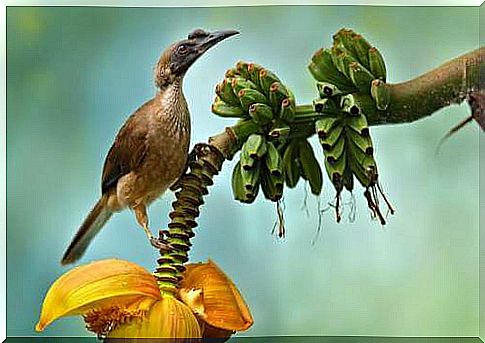
Green Hermit
The green hermit ( Phaethornis guy ) belongs to a subfamily of the Trochilidae family , to which hummingbirds belong. What makes this group different is that they all have particularly curved beaks and very long tail feathers.
This bird lives in the humid forests of Colombia and Costa Rica, Ecuador, Panama, Peru and Venezuela. They are found mainly at high altitudes, between 800 and 2000 meters above sea level.
As the name suggests, these birds have plumage of a green hue. Like hummingbirds, green hermits keep flapping their wings as they suck nectar from flowers.
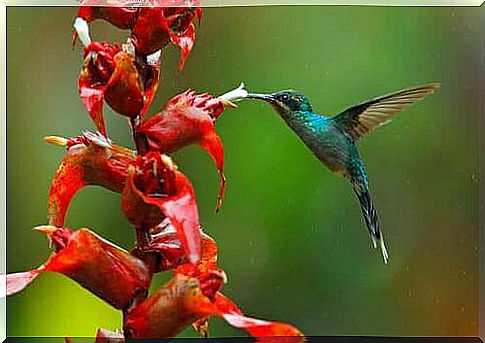
Conservation status of nectarivorous birds
In most cases, the conservation status of many of the nectar-eating species is unknown. This is because they are very elusive, fast and shy animals.
As with many other animal species, the destruction of their habitat threatens their survival. Other looming threats to these birds are intensive farming, road construction, and illegal logging.
It is important to know that many of these birds evolved in parallel with specific plant species. If these disappear, the birds will no longer have a place to get nectar.
